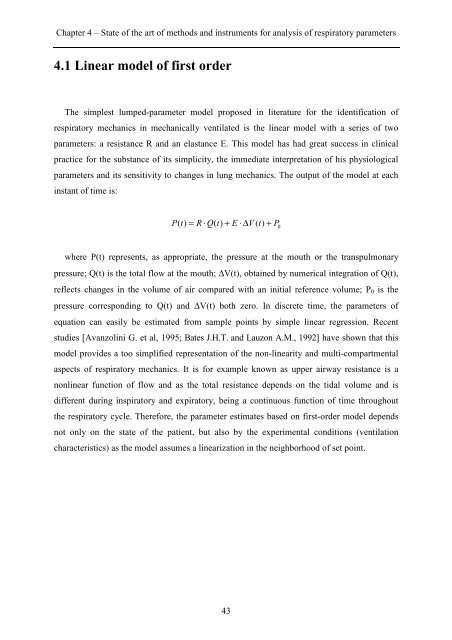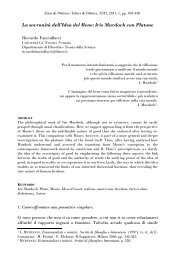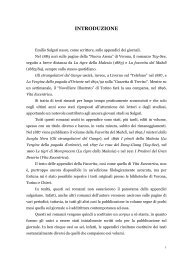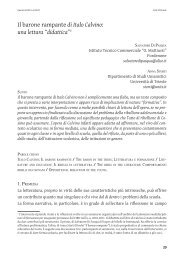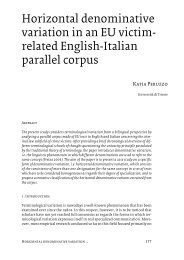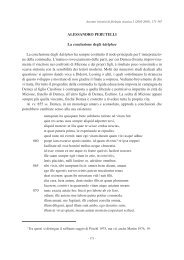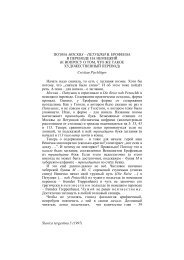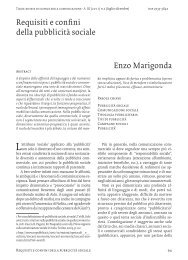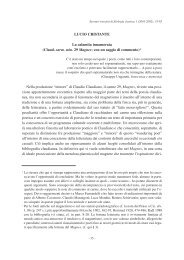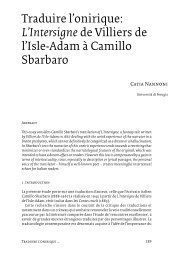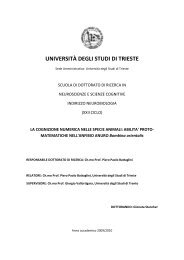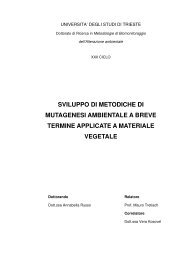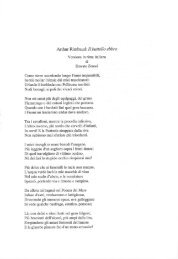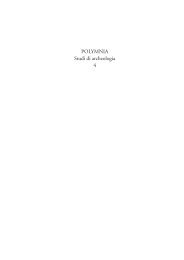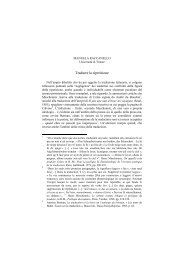UNIVERSITÀ DEGLI STUDI DI TRIESTE - OpenstarTs - Università ...
UNIVERSITÀ DEGLI STUDI DI TRIESTE - OpenstarTs - Università ...
UNIVERSITÀ DEGLI STUDI DI TRIESTE - OpenstarTs - Università ...
You also want an ePaper? Increase the reach of your titles
YUMPU automatically turns print PDFs into web optimized ePapers that Google loves.
Chapter 4 – State of the art of methods and instruments for analysis of respiratory parameters<br />
4.1 Linear model of first order<br />
The simplest lumped-parameter model proposed in literature for the identification of<br />
respiratory mechanics in mechanically ventilated is the linear model with a series of two<br />
parameters: a resistance R and an elastance E. This model has had great success in clinical<br />
practice for the substance of its simplicity, the immediate interpretation of his physiological<br />
parameters and its sensitivity to changes in lung mechanics. The output of the model at each<br />
instant of time is:<br />
P ( t)<br />
= R ⋅Q(<br />
t)<br />
+ E ⋅ ∆V<br />
( t)<br />
+ P<br />
0<br />
where P(t) represents, as appropriate, the pressure at the mouth or the transpulmonary<br />
pressure; Q(t) is the total flow at the mouth; ∆V(t), obtained by numerical integration of Q(t),<br />
reflects changes in the volume of air compared with an initial reference volume; P 0 is the<br />
pressure corresponding to Q(t) and ∆V(t) both zero. In discrete time, the parameters of<br />
equation can easily be estimated from sample points by simple linear regression. Recent<br />
studies [Avanzolini G. et al, 1995; Bates J.H.T. and Lauzon A.M., 1992] have shown that this<br />
model provides a too simplified representation of the non-linearity and multi-compartmental<br />
aspects of respiratory mechanics. It is for example known as upper airway resistance is a<br />
nonlinear function of flow and as the total resistance depends on the tidal volume and is<br />
different during inspiratory and expiratory, being a continuous function of time throughout<br />
the respiratory cycle. Therefore, the parameter estimates based on first-order model depends<br />
not only on the state of the patient, but also by the experimental conditions (ventilation<br />
characteristics) as the model assumes a linearization in the neighborhood of set point.<br />
43


